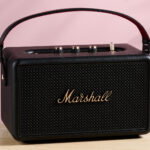Why you can trust TechRadar
We spend hours testing every product or service we review, so you can be sure you’re buying the best. Find out more about how we test.
SteelSeries Arctis Nova 3 Wireless: one-minute review
The SteelSeries Arctis Nova 3 Wireless is a refresh of the company’s previous midrange gaming headset option, back to impress us all as a wireless iteration with tons of functionality that makes it battlestation-ready.
The thing is, there used to be a clear and immediate difference between the sound, feel, and design of gaming headsets. In 2025, though, establishing the hierarchy of available models isn’t as simple. Gaming headsets are a hotly contested space, and there’s very little difference in sound quality between these wireless, dual-connectivity $110 / £100 cans and anything priced within $50 / £50 from competitors like Razer, Logitech G, Corsair, or HyperX. That means its feature set needs to line up with your specific use case for this headset to make sense as your next purchase.
Some of its selling points are universal: great sound, easy setup, and 40 hours of battery life with rapid charging. Over the 30 hours or so I’ve spent using it (the ‘X’ variant designed with Xbox in mind, specifically), those promises have held true, and there’s no one who wouldn’t appreciate them.
Then it gets more specific. If you want a premium headset that you can easily switch between console and PC sources with, and you’re likely to use the companion app, this is a fantastic package. If you’re more of a minimalist who’ll likely only use it with one device and doesn’t care too much about tweaking settings, the price starts to look steeper, and the likes of Corsair’s meat-and-potatoes wired HS55 Surround headset might meet your needs and save you $40 in the process.
Bottom line: there are plenty of desirable features here and they’re bundled in with the signature comfort and crisp, breezy sound characteristic we’ve all come to expect – and love – from the Arctis range over the years. But the $110 / £100 pricing of these Arctis Nova 3s is a long way north of the wired Nova 3s, which are available for $75.
SteelSeries Arctis Nova 3 Wireless: Price and availability
- List price: $109.99 / £99.99 / AU$109.99
- Much pricier than the wired Arctis Nova 3s, albeit with more features
- Closest rival with similar specs is the Corsair HS80 RGB
The price of this lower-end 3-series of the Arctis range is creeping up, and while there are certainly enough additional bells and whistles to justify it, it does leave a bit of a gap between the $60 and $110 price points within the Arctis lineup.
Conversely, the Arctis Nova 5s and the discounted Nova 7s and 9s are all regularly going for between $120-$140 now, so it feels like it would have made more sense for the Nova 3X to offer a genuine low-budget option.
With this MSRP, the closest competitor that offers similar specs is Corsair’s HS80 RGB. Both are wireless gaming headsets with multi-device support, but on the specs sheet, it’s the SteelSeries that comes out most favorably, thanks to the Bluetooth and 2.4GHz wireless connectivity and fast charging.
The appearance and tactile feel might not yell ‘premium!’ at the top of its voice, but once you get those soft earcups over your ears and feel how lightweight this model is, it starts to make more sense.
SteelSeries Arctis Nova 3 Wireless: specs
|
Price |
$109.99 / £99.99 / AU$109.99 |
|
Weight |
267g / 0.57 lbs |
|
Battery life |
40 hours |
|
Connection type |
Bluetooth, 2.4GHz wireless (USB-C receiver) |
|
Compatibility |
PC, Xbox Series X (Xbox version only), PlayStation 5, Nintendo Switch, iOS, Android |
SteelSeries Arctis Nova 3 Wireless: design and features
- Typically comfortable design
- You feel the benefit of those lightweight materials
- Not the flashiest headset in the world
The ‘Nova’ part of this headset’s name delineates SteelSeries’ refresh of the Arctis line from its original ‘ski goggle headband’ ancestors that debuted in 2017 and gobbled up all the awards, ever.
That means the headband on this model runs underneath a hard plastic support band, popping into place via plastic press studs and suspending the weight of the heavier materials via the lateral tension of the elasticated band.
It’s a smart design that doesn’t look like it should work as well as it does, and it’s helped along by an extremely lightweight construction. On the scales (and the specs sheet), the new 3 Wireless weighs just 9.4oz / 267g. And thanks to that headband, it feels like even less than that.
Not much clamping force is needed to keep this firmly attached around your ears, so there’s a very different sensation than you’d find on the aviator-style HyperX Cloud or Razer Blackshark designs that hug your ears like suction cups.
That all contributes to a wonderful level of long-term wearing comfort, and also, one suspects, to the airy, crisp sound quality that Arctis cans always seem to produce.
In terms of physical controls, it’s a simple array, arranged on the rear-left earcup: a mic mute button, notched volume scroll wheel, power button with light ring, then a USB-C connection and the 3.5mm detachable mic input.
My only gripe with this array is that the plastic surrounding the mic connector doesn’t fit exactly with the shape of the female connection, but that’s really only an aesthetic quibble. Otherwise, all the controls look and feel really nicely built, and they’re sensibly laid out. The scroll wheel feels fantastic, in particular.
On to the visual design. It appears the gaming peripherals market has come full circle: after years of shoving RGB-laden tat with tribal designs all over it, it appears that all those collabs with pro players have paid off, and we’re getting simpler, cleaner designs now that don’t lean into the gamer aesthetic. For that, the Arctis line past and present deserves a pat on the elasticated headband.
However, I’m in the strange and unexpected position of wishing for a bit more edginess here. Not quite a tribal pattern, but… something to better distinguish it from productivity hardware and make me feel like the price is a no-brainer. Perhaps a mix of matte and gloss finishes might have helped.
One last point on the design: it’s too early to tell for this model, but I know through years of using numerous Arctis and Arctis Nova headsets that the headbands do slacken over time, and this affects the comfort level.
Fortunately, SteelSeries sells replacement headbands at a very reasonable price, so when this happens, it’s not a biggie to restore that factory-fresh feeling.
SteelSeries Arctis Nova 3 Wireless: performance
- Crisp and distinctive audio
- Switch between PC and console easily
- Rapid charging is a lifesaver
Let’s talk about sound. At the start of this review, I mentioned that there’s not much in it between the huge range of gaming headsets you could go out and buy in 2025.
Ten years ago, when manufacturers were obsessed with packing the biggest drivers possible into their headsets and shaking your fillings loose with their bass response, there was a huge variance in audio characteristics. Now the difference between models and manufacturers is much subtler.
That said, there’s always been an ‘Arctis sound’. SteelSeries has always preferred a flatter EQ response for this range, with a crisper high end and a pleasant airiness that makes sound cues easier to identify in competitive games, and makes music and movies sound less soupy than historical gaming cans might have done.
That holds true to this Nova 3 Wireless. Part of it’s probably the cloth surface around the earcups, and the light clamping force. They create an almost open-backed headphone sensation, which I find very agreeable, but this is a matter of taste, not an empirical plus point.
EQ profile tweaking can be achieved – to an absurdly exhaustive degree, frankly – via the companion app on your phone. There are presets for tons of specific games already on there at release, but personally, I’d caution that this feature is way more about marketing than user experience. In reality, Call of Duty Black Ops 6, Grand Theft Auto 5, and Fortnite don’t really need distinct presets from each other.
It’s all gunfire and shouting at the end of the day. It’s added value, but unlikely to transform your experience of using this headset. So think carefully about this component and how it fits into the price before you take the leap.
On to more universal wins: I love the fast USB-C charging. The literature states nine hours of battery life from 15 minutes of charge time, and while it’s hard to measure how accurate that statement is during real-world use, based on my week of heavy use, it sounds roughly correct. I’ve certainly never had a session disrupted by battery level, and that’s the bottom line.
As for the mic, it sounds like there’s more compression and noise cancellation happening by default than you’d typically hear on a modern headset mic, and that means it’s prioritising clarity over a full-bodied, boom mic-style sound.
This is the correct priority placement for the vast majority of users, who need a mic to be heard over game audio by their team-mates, rather than to sound broadcast quality to their streaming audiences. If you do create content using a headset mic rather than a dedicated unit, this might not be ideal for you as it’ll require some parameter-fiddling to get a more rounded sound.
Finally, let’s tackle the biggie: multi-device connectivity via 2.4GHz wireless and Bluetooth. The idea here is that ‘battlestation’-type gamers play on several devices in one area, switching between PC and console from one title to the next. Traditionally, using one headset for both can be a slight hassle due to varying connection standards and compatibility. The USB-C dongle here means you can just plug it into whichever device you want to use, and that’s the extent of the setup.
The Nova 3 Wireless’s dual connectivity means you can also stay connected to a gaming device plus your smartphone at the same time, and apply different presets for each via the mobile app so you don’t accidentally end up with Fortnite EQ on your TikTok videos.
Maybe this is a big deal for you. The presets don’t move the needle much for me, but dual-wireless is always a big plus, and it adds a lot to the pricing.
Should I buy the SteelSeries Arctis Nova 3 Wireless?
Buy it if…
Don’t buy it if…
SteelSeries Arctis Nova 3 Wireless: Also consider
Is the Arctis Nova 3 Wireless leaving you cold? Consider these cable-free, multi-platform alternatives.
| Row 0 – Cell 0 |
SteelSeries Arctis Nova 3 Wireless |
Turtle Beach Stealth 600 (gen 3) |
PlayStation Pulse Elite |
|
Price |
$109.99 / £99.99 / AU$109.99 |
$99.99 / £99.99 / AU$179 |
$149.99 / £129.99 / AU$239.95 |
|
Weight |
267g / 0.57 lbs |
0.66lbs / 301g |
0.76lbs / 347g |
|
Battery life |
40 hours |
80 hours |
30 hours |
|
Connection type |
Bluetooth, 2.4GHz wireless (USB-C receiver) |
Wireless (USB-A dongle), wired (USB-C to USB-A) |
Wireless (PlayStation Link via dongle), Wired (3.5mm audio jack), Bluetooth |
|
Compatibility |
PC, Xbox Series X (Xbox version only), PlayStation 5, Nintendo Switch, iOS, Android |
Xbox, Playstation, PC, Nintendo Switch, iOS, Android |
PlayStation 5, PlayStation Portal, PC |
How I tested the SteelSeries Arctis Nova 3X Wireless
- 25-30 hours spent testing across multiple devices
- PC games and iPhone apps used throughout
- Comfort and battery life evaluated via long-term usage and extended play sessions, audio via music and in-game sound
Over the course of a full week of testing, I spent time in MotoGP 25, Hitman 3, and Shadow Man Remastered on PC. The latter’s 25-year-old audio might not have pushed the 3X’s drivers to their limits, but the new engine audio capture in MotoGP 25 conveyed a lot of detail across the EQ spectrum, and the engine pops sounded particularly rousing. Meanwhile, in a stealth environment like Hitman, the strong surround landscape of this headset gave me plenty of precision about where guard dialogue lines and footsteps were coming from.
I also had the 3 Wireless connected to my iPhone 12 Pro Max via Bluetooth and used them to browse YouTube videos and listen to music on Spotify between PC game sessions. I had plenty of Discord chat on both devices, taking impressions from my mates about mic quality before recording audio directly into Ableton Live for a true analysis.
Finally, I did some A/B testing with my daily drivers, the Razer Blackshark V2 Pros, switching between headsets during the same game to hear the precise differences in audio characteristics from the same sound cues.
First reviewed June 2025
Read more about how we test
Read the full article here













